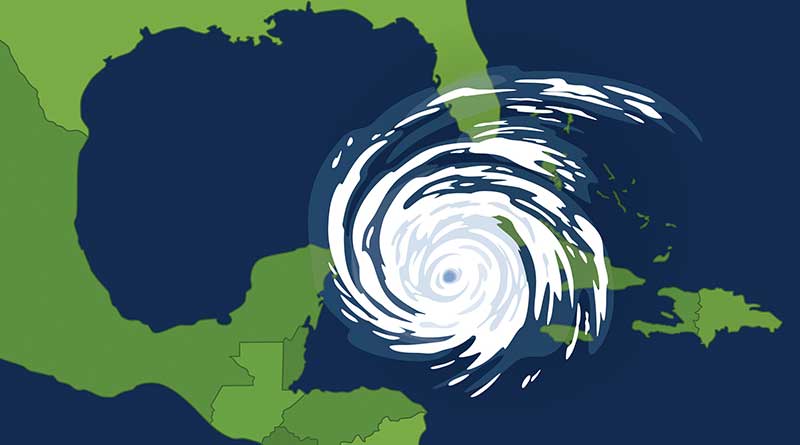Southwest Florida Ground Zero for Hurricane Ian
The hospitality industry takes a big hit, most resorts plan ambitious rebuild
For decades, Southwest Florida has welcomed millions of vacationers from around the globe, lured by its 271 annual days of sunshine, pristine beaches laden with rare seashells, swaying palm trees, and a consumer-centric economy. For a few days in September 2022, however, the sun did not shine while our community suffered from a disaster of unprecedented proportions, leaving us battered and bruised with broken hearts, broken lives, and thousands with unknown futures.
On Sept. 28, 2022, Southwest Florida experienced one of the worst days we have known when Hurricane Ian made landfall in Lee County and the Fort Myers area at its most intense level as a Category 4 hurricane with maximum sustained winds of 155 miles per hour. Total storm-related deaths in Florida later reached 109 souls, including 54 in Lee County and five in Collier County, making it the deadliest storm to hit Florida since 1935. With close to 20,000 Lee County residences demolished and 7,000 businesses destroyed or damaged, Ian left both renters and property owners completely homeless. Flooding from a 15-foot storm surge caused thousands of vehicles to be declared totally lost. While many Florida areas also had damage, this story is specifically about my hometown, Fort Myers.
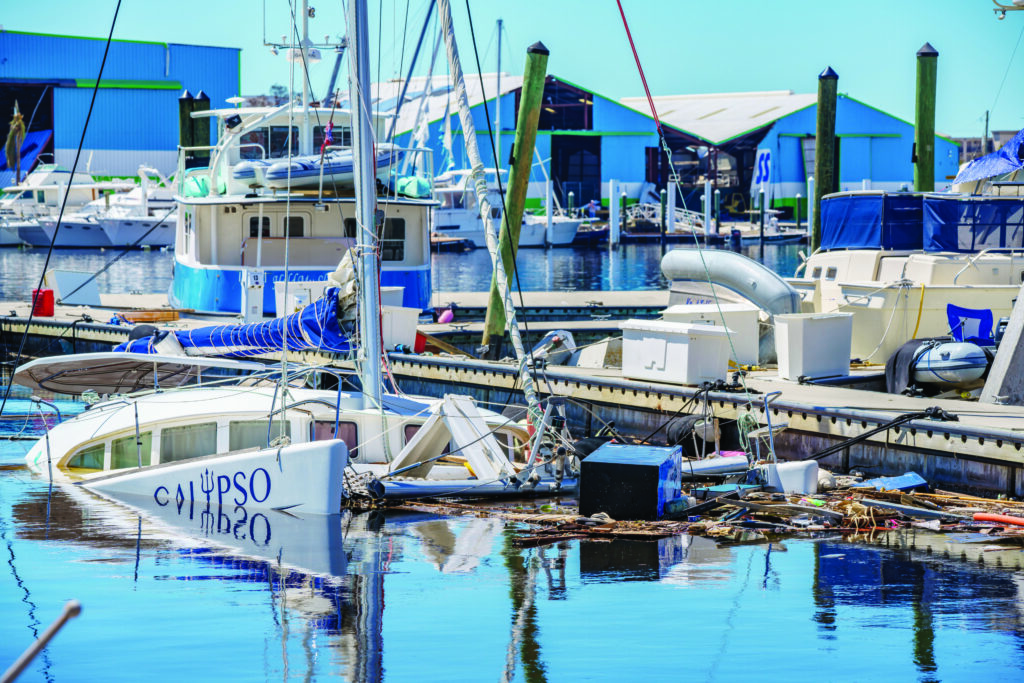
Collapsed Structures
Unbelievably, there were over 3,500 collapsed structures on Fort Myers Beach, which had a population of about 6,000, dramatically expanding during the season. Aerial images show only a handful of buildings still standing on the 7-mile-long island. Any building that was ground level on Sanibel Island had a minimum of over four feet of water surge inside. Fort Myers Beach, or locations closer to the Gulf, were even worse.
After the storm, downed trees, and power lines with nonfunctioning stoplights at every intersection made it dangerous to drive. Schools closed for a week, many were damaged or utilized as shelters for families made homeless by the storm. Imagine no electricity, cell phone, TV, or internet for a week or longer. There were boil water notices in some areas but no power for boiling. Banks, gas stations, restaurants, and retail operations remained closed until power grids were connected. If you had cash, a full tank of gas, a generator, and a cooler full of food and ice, you were among the very lucky.
Related: Accounting for Disasters and Insurance Proceeds: Is Your resort Prepared?
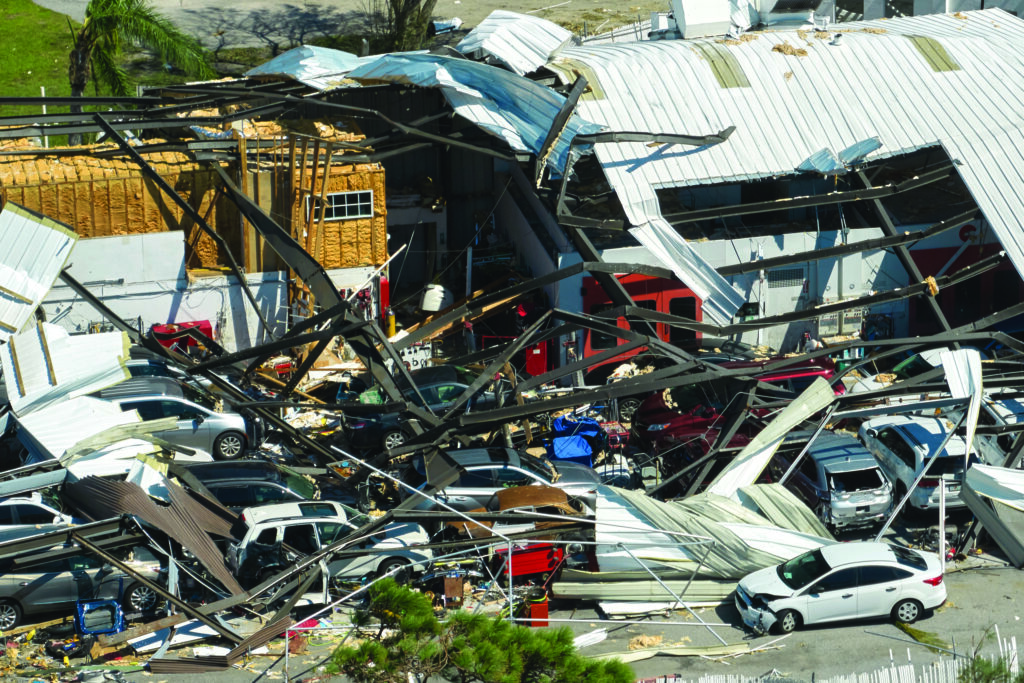
Bridges Destroyed
Hurricane Ian’s 155-mph winds and 12-foot storm surge demolished five sections of the 3-mile-long Sanibel Causeway – a series of bridges connecting the mainland to Sanibel Island and the only access to Sanibel and Captiva. What was originally thought to take six months was completed in three weeks as a temporary paved two-lane road gave Sanibel its lifeline back to the mainland and allowed crews to guide the restoration of island infrastructure and debris removal. In a more remote part of the county, the Matlacha Pass Bridge, which connected Pine Island to the mainland, was destroyed but magically repaired within two weeks, enabling the restoration of power and water supplies.
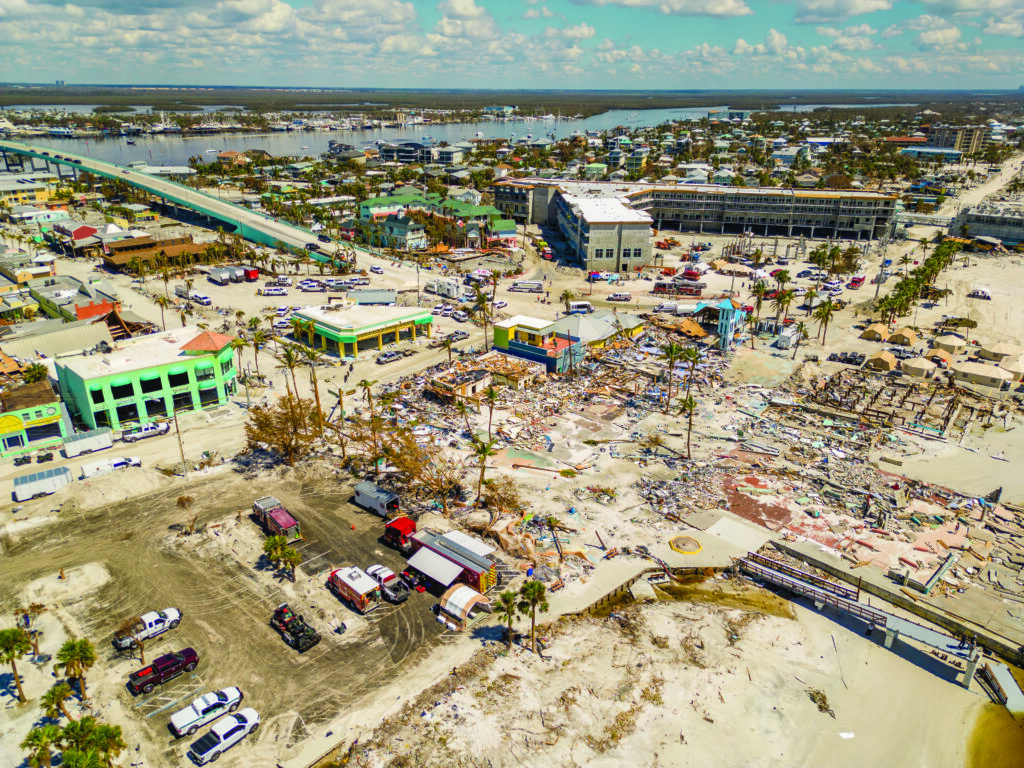
Lost Workers/Tourism
Lee County is home to about 800,000 residents and includes Sanibel Island, Pine Island, and 13 other barrier islands off the Southwest Florida coast. Fort Myers is the county seat. Every year, our county attracts five million visitors and $3 billion in spending, according to the Lee County Visitor & Convention Bureau (VCB) with the Gulf beaches as one of our most popular attractions. Before Ian ravaged Southwest Florida, one out of every five people worked in tourism, employing nearly 70,000 in Lee and Collier counties, including workers at hotels, restaurants, and attractions.
After the storm, once thriving hotels and resorts began announcing massive worker layoffs just as our tourist season – generally fall until Easter ¬– was set to begin. It’s too soon to estimate how many jobs have been lost, temporarily or permanently. As the closure of many resorts left former employees scrambling to find other work, some workers left the area to find employment in other states, saying they had no choice but to relocate. They may never return. Recovery and rebuilding could take over a year. Clearly, the tourism industry has taken a big hit.
Prior to the hurricane, Florida was already undergoing a labor shortage after Covid. From the iconic Ritz-Carlton in Naples (600 workers laid off) to the famed 330-acre South Seas Island Resort on Captiva, which is planning a $1 billion rebuild (234 workers gone), to the JW Marriott on Marco Island, resorts are laying off hundreds of workers as they announce construction plans. Most properties retained as many staffers as possible to help with the cleanup. Hotels and resorts that were not damaged, like the Pink Shell on Fort Myers Beach, were packed with first responders, insurance adjusters, construction, and cleanup crews making the supply of rooms for locals and tourists extremely tight.
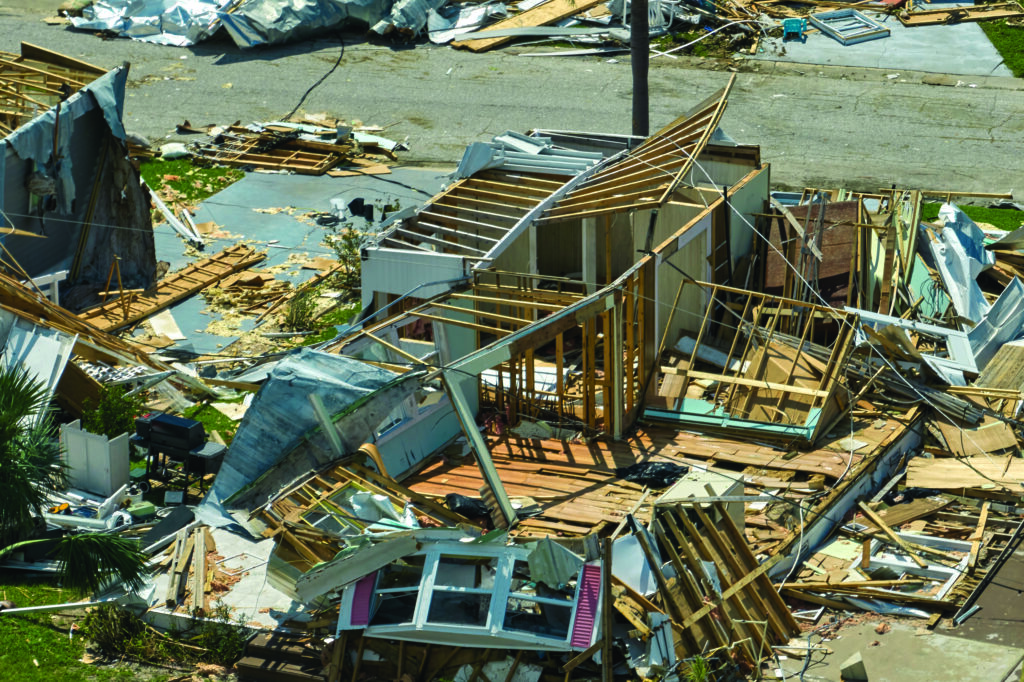
Timeshare Origins
The first purpose-built timeshare resort in the U.S. was the 31-unit Sanibel Beach Club, welcoming its first owners in 1974 on Sanibel Island. As the timeshare industry grew in popularity, other timeshare resorts were soon developed nearby. Today, Lee County has about 62 timeshare resorts from Marco Island to Fort Myers Beach, Sanibel, and Captiva Islands. About 20 of these are older Legacy resorts on Fort Myers Beach, the hardest hit of all communities. By press time, it was too soon to determine which resorts survived and which did not.
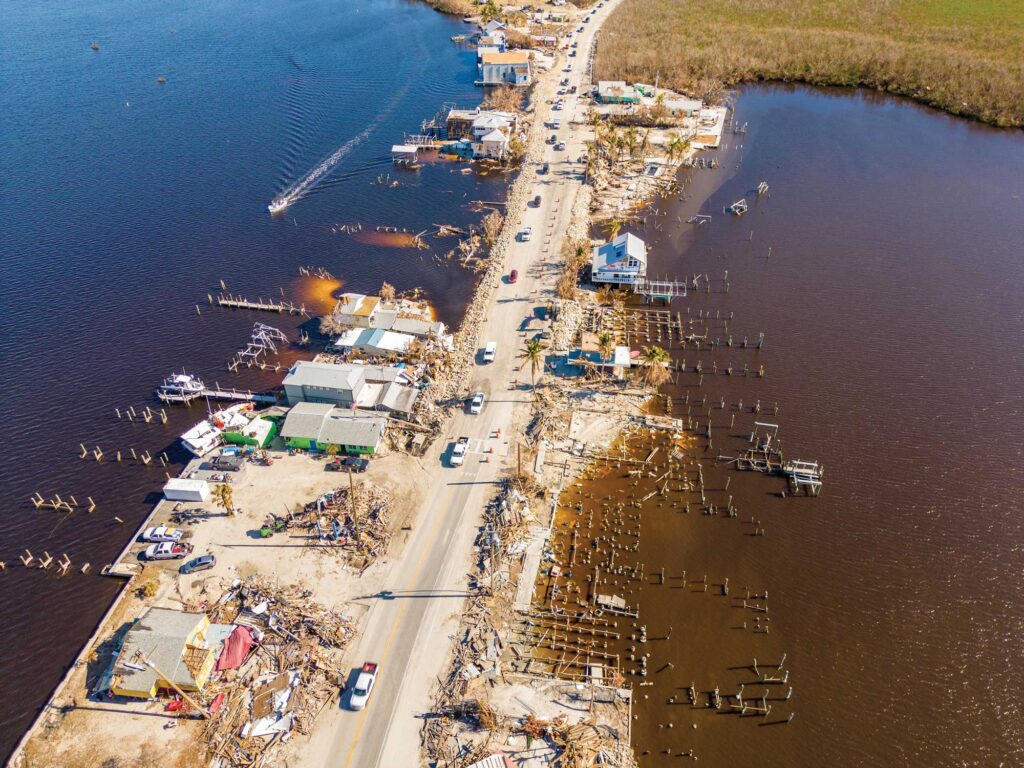
Post-Apocalypse
By the end of October, Lee County announced they had reached a major milestone by collecting 1 million cubic yards of debris. While we will be clearing decimated beach areas for years to come, the estimated total damage may climb to $75 billion for commercial and residential properties, with extensive damage to hotels and resorts. This is the highest ever for a storm making Florida landfall.
Today, tarped blue roofs dot the landscape. Over 6,000 boats were blown away like paper, now perched miles from their original docks, landing in trees, on dry land, mangroves, or on top of other boats. In many communities, mountains of debris still line every street, filled with the heartbreaking combination of drenched furniture, battered appliances, and well-loved keepsakes. Mostly shuttered hospitality properties – once teeming with happy vacationers – are planning a long recovery and rebuild process with no set date for accepting reservations. With tourism the lifeblood of our community, this is truly tragic.
Thousands of displaced area residents checked into hotel rooms under FEMA’s transitional shelter program. Many are looking for a new place to live, but homes that were available before the storm or need to be assessed and repaired after Ian are being snapped up quickly. Rentals have been flying off the shelves and nearly impossible to find, surely not at prices affordable by the service industry. Many short-term vacation rental properties on the islands were wiped away. With Florida’s insurance industry a financial train wreck, devastated by fraud and lawsuits, rates have doubled in the last five years, some tripling the national average. More insurance companies will surely fall into bankruptcy.
Related: Design After Disaster Start With a Plan
New Workers
Conversely, the absence of tourism revenue may soon be replaced by revenue from construction workers with electricians, plumbers, and builders now in more demand than ever before. The storm’s devastating aftermath and profound economic impact is expected to be felt for decades to come. Some businesses – and frankly people – may never recover emotionally or financially. Many are still digging out. Others fared better, but no one was left unscathed. Tourism housing may be a challenge for the next year or so, but in the end, the deep belief here among hospitality professionals is that Southwest Florida will emerge as an more popular vacation destination. The Florida of old will be surrounded by shiny new structures constructed to building standards that are hopefully impervious to massive storms.
Surely the road to recovery will be long and arduous, due to inflation, high-interest rates, scarce labor, and materials costs. As a resident of Southwest Florida for 44 years with a large percentage of my clients on Sanibel Island or damaged areas, I personally believe the restoration of our hospitality industry to its pre-hurricane levels will continue with small steps of progress at every turn. Our community pride will help return our region to the tiny sliver of paradise that has been loved for decades by millions of vacationers. Hurricane Ian did not wash away our spirit or our indefatigable resiliency. It’s important to remember that Southwest Florida’s eternal sunshine, soft sandy beaches, shiny seashells, swaying palms, and tranquil Gulf waters have not disappeared. They are still here and will continue to attract more visitors. Newer vacation accommodations will simply take a bit longer.
Marge Lennon has been writing about the timeshare industry and its resorts forever. She can be reached at Marge@LennonCommunications.com.

